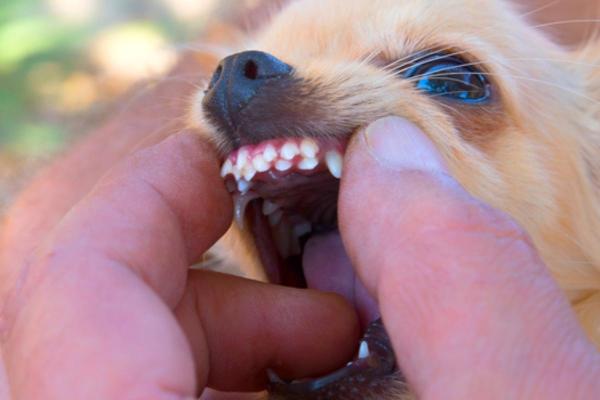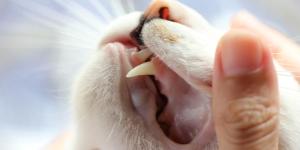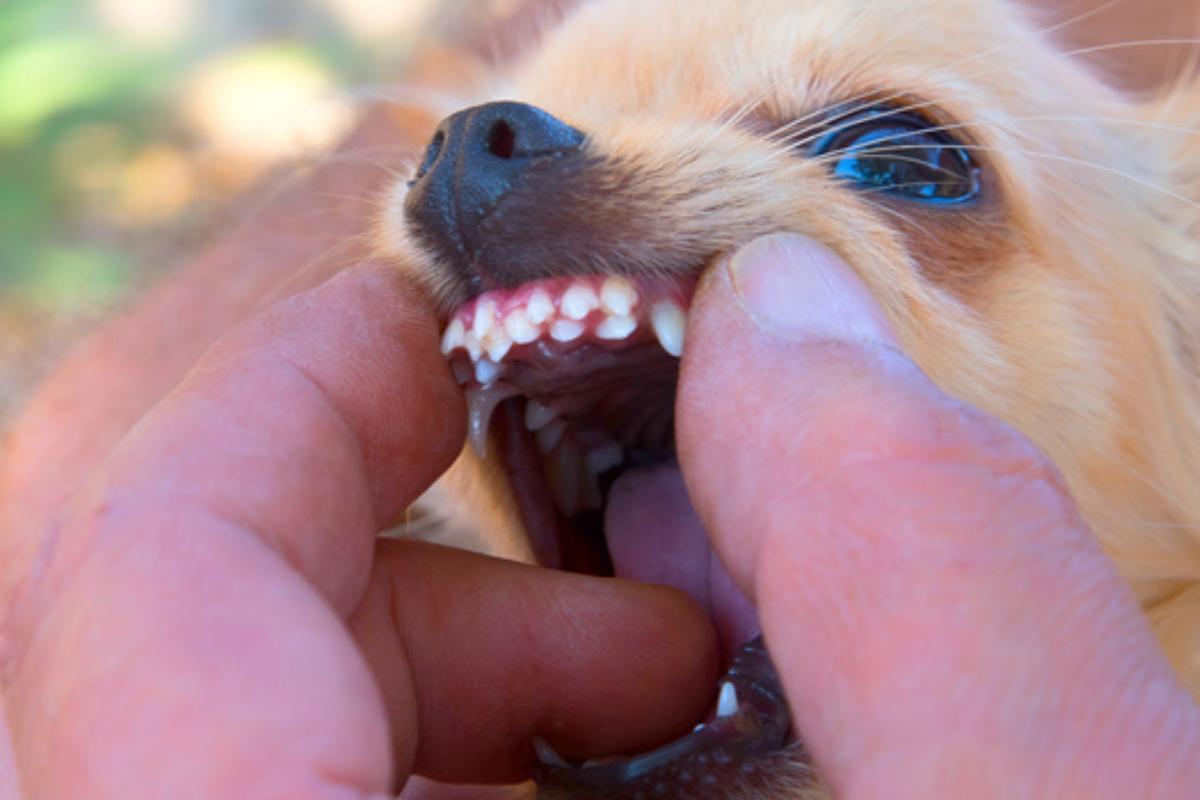Double Canine Teeth in Dogs



See files for Dogs
As our puppies grow up, we need to ensure their development is progressing well. Some signs this is the case can be observed more easily than others. As with any part of their body, a dog's teeth change as they mature from a puppy to adulthood. While it can be a little painful for a dog's deciduous teeth to fall out and be replaced by their permanent teeth, it is usually a relatively smooth transition. It is also possible for a dog to have two rows of teeth, something which is not considered normal and can be very painful for the animal.
At AnimalWised, we look at double canine teeth in dogs and discover why a dog has two rows of teeth. We understand what happens to the dog, see what symptoms they present and find out what we can do to help them.
What are double canine teeth in dogs?
When dogs are young, they go through a process known as tooth eruption. This is the same process human children endure as one dentition is replaced by another:
- Deciduous or primary dentition: after initial teething in puppies, they will have a set of 28th deciduous teeth, also known as baby teeth or milk teeth. These puppy teeth are sharper and smaller than adult dentition.
- Permanent or definitive dentition: after a dog's milk teeth fall out, their adult teeth grow in to form a set of 42 permanent teeth.
The process of replacing the primary dentition with permanent teeth begins around the third month of life. It ends between the sixth and seventh month. This process of replacement requires the adult teeth to erupt upwards and push the milk teeth out. If this doesn't happen, it means we can see two rows of teeth one in front of the other. This is known as persistent deciduous teeth in dogs.
The dogs canine teeth, also known as their fangs, are most affected by this issue. Although rarer, it is also possible for other teeth not to develop properly. In these cases, we may also see two rows of incisors and premolars. It is not very common for a dog to develop two rows of molars.
Although persistent deciduous teeth can occur in any dog, toy dog breeds are particularly susceptible to it. The breeds which most commonly have double canine teeth include:
- Yorkshire Terrier
- Pomeranian
- Maltese
- Bichon Frise
It should be noted that persistent deciduous dentition must be differentiated from hyperdontia. In hyperdontia, a greater number of teeth is also observed in the mouth of dogs. In this case, it is not due to the persistence of milk teeth, but rather to the fact that there is a greater number of permanent teeth. We may see an extra row of teeth, but they may also appear in various positions.
If you want to learn more about the process which affects changes in dentition, take a look at our article on why my dog's baby teeth are not falling out.
Causes of double canine teeth in dogs
The causes that can lead to the appearance of a persistent deciduous dentition in dogs are:
- Growth of the permanent tooth in the wrong direction: when a permanent tooth does not grow in the correct direction, it does not put enough pressure on the root of the baby tooth. In turn, this prevents the milk tooth from falling out.
- Migration of the permanent tooth germ: the tooth germ is the set of cells that are formed during the embryonic period to give rise to the future permanent tooth. When this germ migrates to an abnormal position, it will not push the root of the milk tooth, which will prevent it from falling out.
- Dental agenesis: the congenital absence of one or several teeth due to lack of formation of the dental germ during the embryonic period. As there is no permanent tooth, it does not press on the root of the milk tooth and its resorption does not occur.

Diagnosis of double canine teeth in dogs
The diagnosis of persisten deciduous dentition in dogs is simple and is based on the following factors:
- Exploration of the oral cavity: the coexistence of milk teeth and permanent teeth can be observed. There does not necessarily have to be duplication in all the dental areas, with usually only some teeth being retained. As we have said, the canine teeth are most commonly affected.
- Dental x-rays: they allow a precise diagnosis to be made by knowing the state and placement of the different teeth (baby and permanent) in the oral cavity.
Since improper growth can affect the dentition, it can make it easier for food and other debris to collect between the two rows of teeth. For this reason, we may see general signs of tooth decay in the dog.
Treatment of double canines in dogs
The existence of retained deciduous canines in dogs predisposes to the appearance of various pathologies and oral disorders in dogs. Some of the most relevant are:
- Periodontal disease
- Painful malocclusion
- Gingival, palatal and/or dental trauma
- Dental fractures
For this reason, it is important to frequently check the oral cavity of dogs during the dental replacement process. Since the baby teeth and permanent teeth push up against each other, we should also look to see if hair, food and other debris collects between them. This debris also collects bacteria and increases the risk of infection. For this reason, we may see blood, wounds or even purulent discharge around the teeth.
In the initial stages of the milk teeth dropping out, we may see the appearance of double canine teeth or two rows of other teeth. This may mean we simply need to wait for the replacement period to finish and the baby teeth will fall out naturally. If the deciduous teeth are persistent after a reasonable amount of time, we will need to go to the veterinarian. They will likely extract the retained teeth under general anesthesia.
Surgical extraction of retained baby teeth in dogs can be complicated. It is relatively common for the root of milk teeth to fracture and permanent teeth to be injured. It is essential the extraction is carried out by a veterinarian specialized in canine dentistry.
The extraction of persistent teeth should be done as soon as possible. The chances of permanent teeth being placed in the proper position decrease over time, making orthodontic treatment necessary. In addition, delaying the extraction progressively aggravates the negative consequences of the persistence of milk teeth. Such as infection leading to periodontitis in dogs.
This article is purely informative. AnimalWised does not have the authority to prescribe any veterinary treatment or create a diagnosis. We invite you to take your pet to the veterinarian if they are suffering from any condition or pain.
If you want to read similar articles to Double Canine Teeth in Dogs, we recommend you visit our Other health problems category.
- Association of Spanish Veterinarians Specialists in Small Animals. (AVEPA). Teething in puppies: determining their age.
- Castejón, A., de la Morena, M., San Román, F., Fernández, JM, & San Román, F. (2016). Canine and feline pediatric dentistry. Clin. Vet. Peq. Anim., 36(2), 79-89.
- Fernandez, J.M. (2014). Dentistry in the daily clinic. Association of Spanish Veterinarians Specialists in Small Animals.






